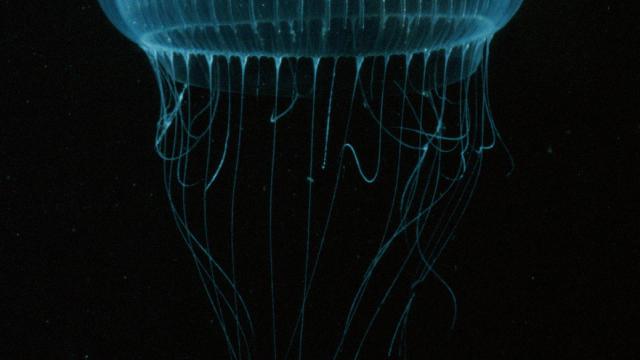In his new book Illuminating Disease, chemist Marc Zimmer explains how fluorescent proteins have changed science. Taken from glowing jellyfish, these proteins are now one of the most important tools in medicine, used in everything from brain mapping to disease research. And yes, that is a GMO glowing chicken.
We’ve got an excerpt from his book.
Marc Zimmer explains the book like this:
Just as the invention of the light microscope opened windows to the world too small to be seen with the naked eye, fluorescent proteins have been used to light up proteins in new and wondrous ways, allowing us to observe previously unseen facets of disease.
Fluorescent proteins are changing the world. This comes as no surprise to people working in medicine and the biological sciences. And yet it is exceedingly rare to read about fluorescent proteins in the popular press.
Illuminating Disease details the history of genetically modified fluorescent parasites and viruses as they provide us with new information about the spread of diseases like malaria, AIDS, and dengue fever. It describes how genetically modified mosquitoes with glowing gonads may curb the spread of malaria, and how a protein governing bowel movements, drooling and sex in roundworms helps us understand cardiac disease.
Illuminating Disease uses bioluminescent proteins as the thread to tie together a narrative of the scientific efforts made to conquer the world’s most dangerous diseases.
Below, we’ve got a gallery of images from the book, with captions provided by Zimmer so that you can understand what you’re seeing in this fluorescent world.
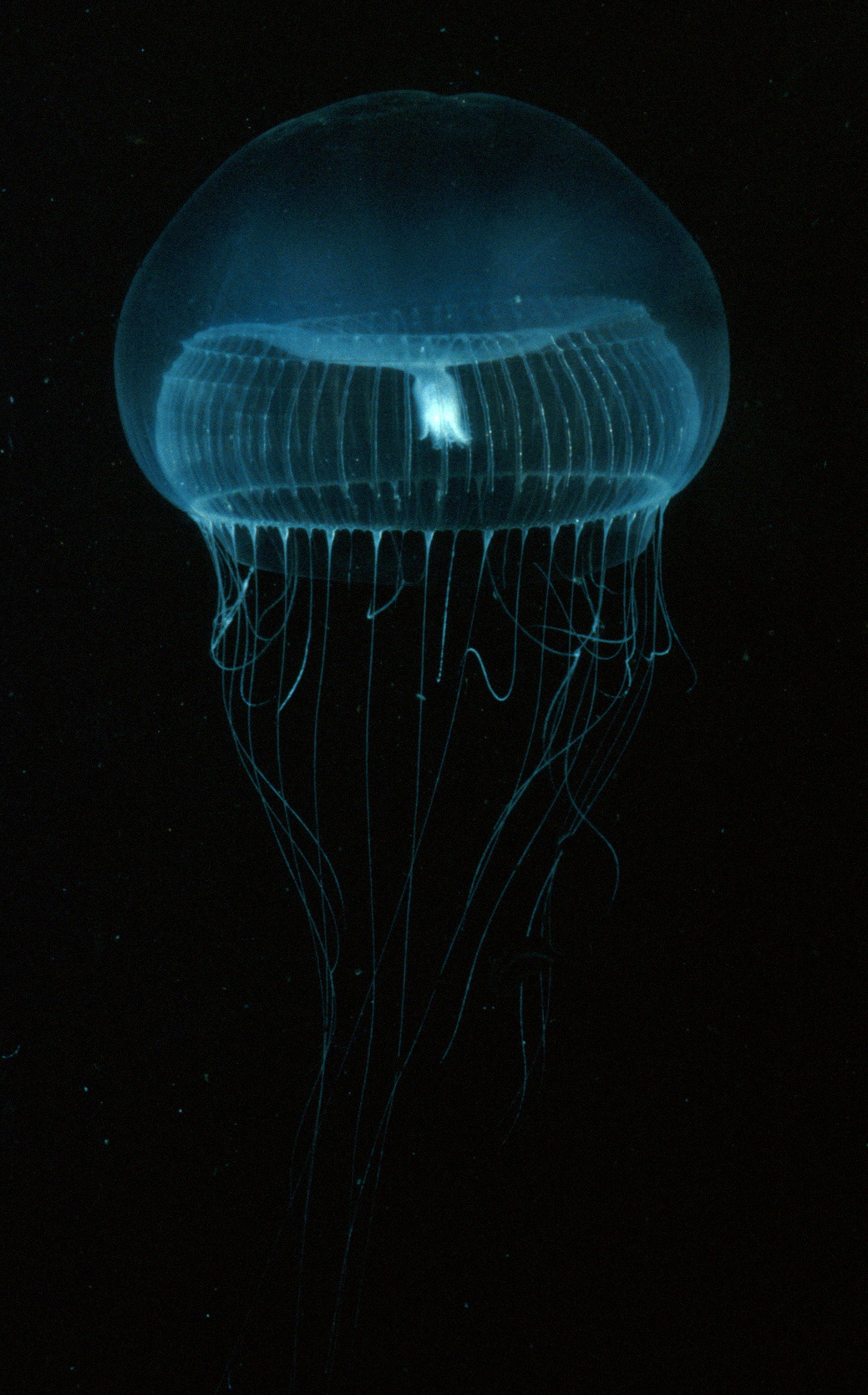
The crystal jellyfish, Aequorea victoria, (above) has about 300 photoorgans (below) on the bottom edge of the jellyfish’s umbrella.
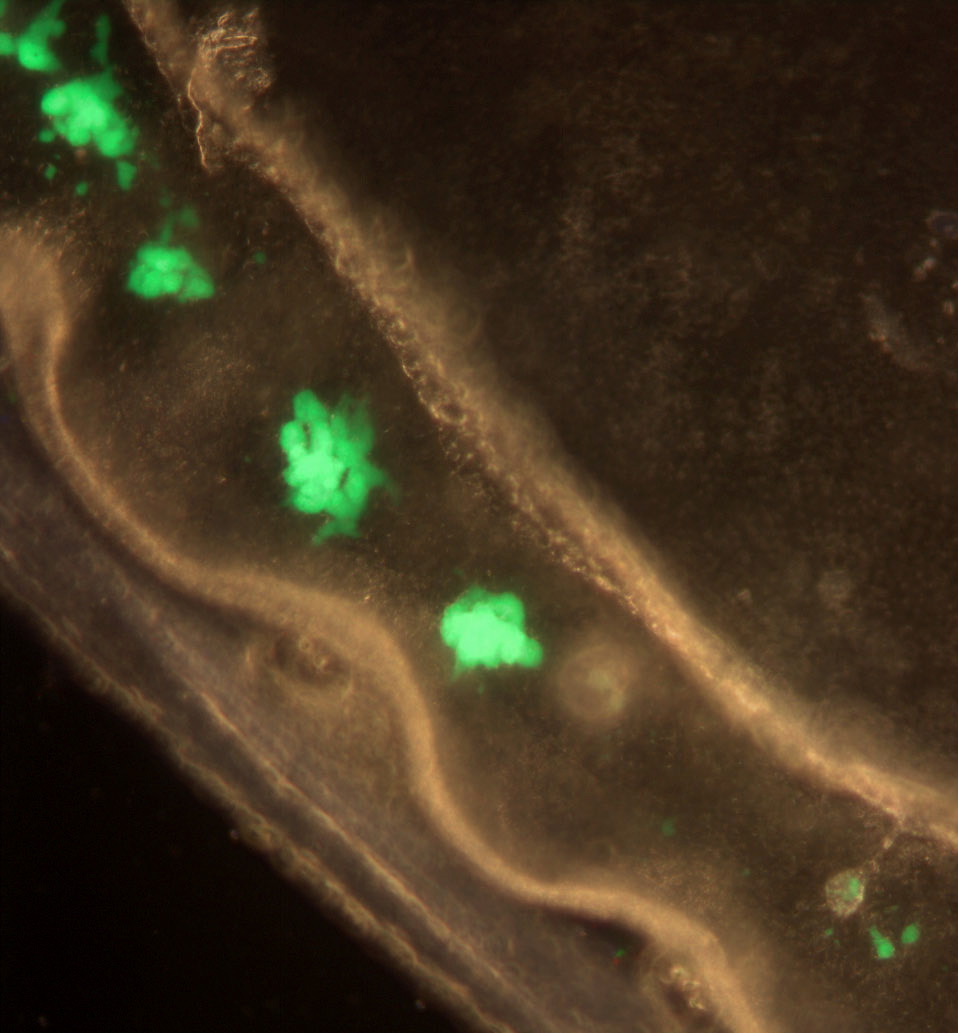
They can emit green light and are the original source of the green fluorescent protein (GFP) gene, which is used in over 1 million experiments a year. (Photos Courtesy Steven Haddock
)
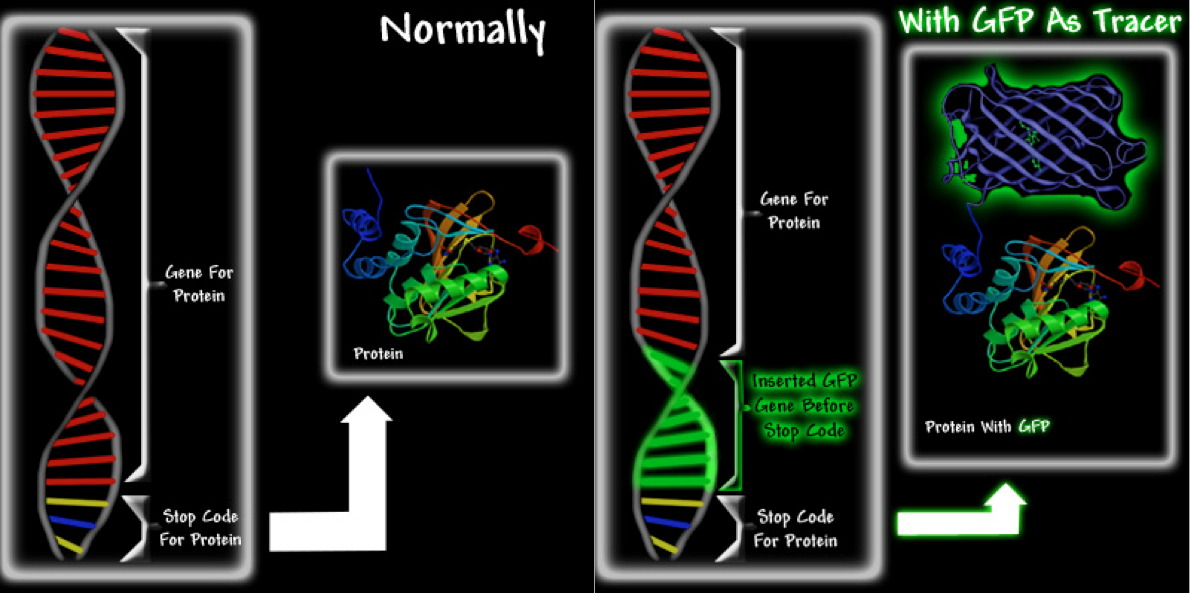
At the end of each gene is a stop codon, which ends protein production. Insert the GFP gene at the end a gene of interest, right before the stop codon. Now instead of stopping when the protein is made, the cell carries on making GFP. As a result, the cell produces a protein with a GFP attached to it. The protein is now fluorescent and by using a fluorescence microscope one can see where and when the protein is made.
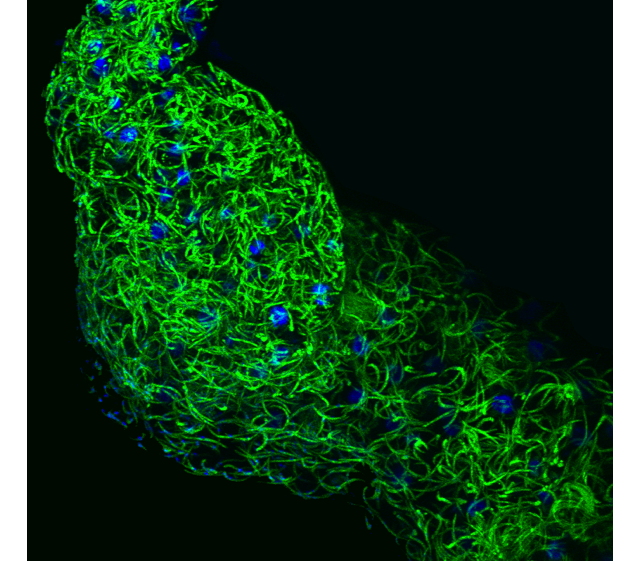
Above are GFP genetically modified malaria parasites packed in a mosquito salivary gland. When the mosquito bites its victim the green parasites move through the proboscis, enter the host’s blood stream and begin the race to the liver. Even if the salivary glands of the mosquitoes contain more than 20 thousand parasites and they are massively drooling, no more than a thousand no more than a 1,000 parasites will be ejected at a time. (Image courtesy Miguel Prudêncio)

Aedes aegypti mosquitoes transmit dengue fever. A small biotech company, Oxitec, has genetically modified these mosquitoes so that they produce offspring that do not progress beyond the larval stage. The genetically modified mosquitoes also contain fluorescent proteins so that they can be distinguished from the wild mosquitoes in the field. The self-destructing mosquitoes have successfully curbed the spread of Dengue Fever in parts of Brazil. (Courtesy Derric Nimmo/Oxitec Ltd)

The chicken on the right has been genetically modified with GFP to differentiate it from normal chickens. It also has a RNA decoy sequence that prevents it from transmitting the avian influenza A virus. (Photo credit Norrie Russell )
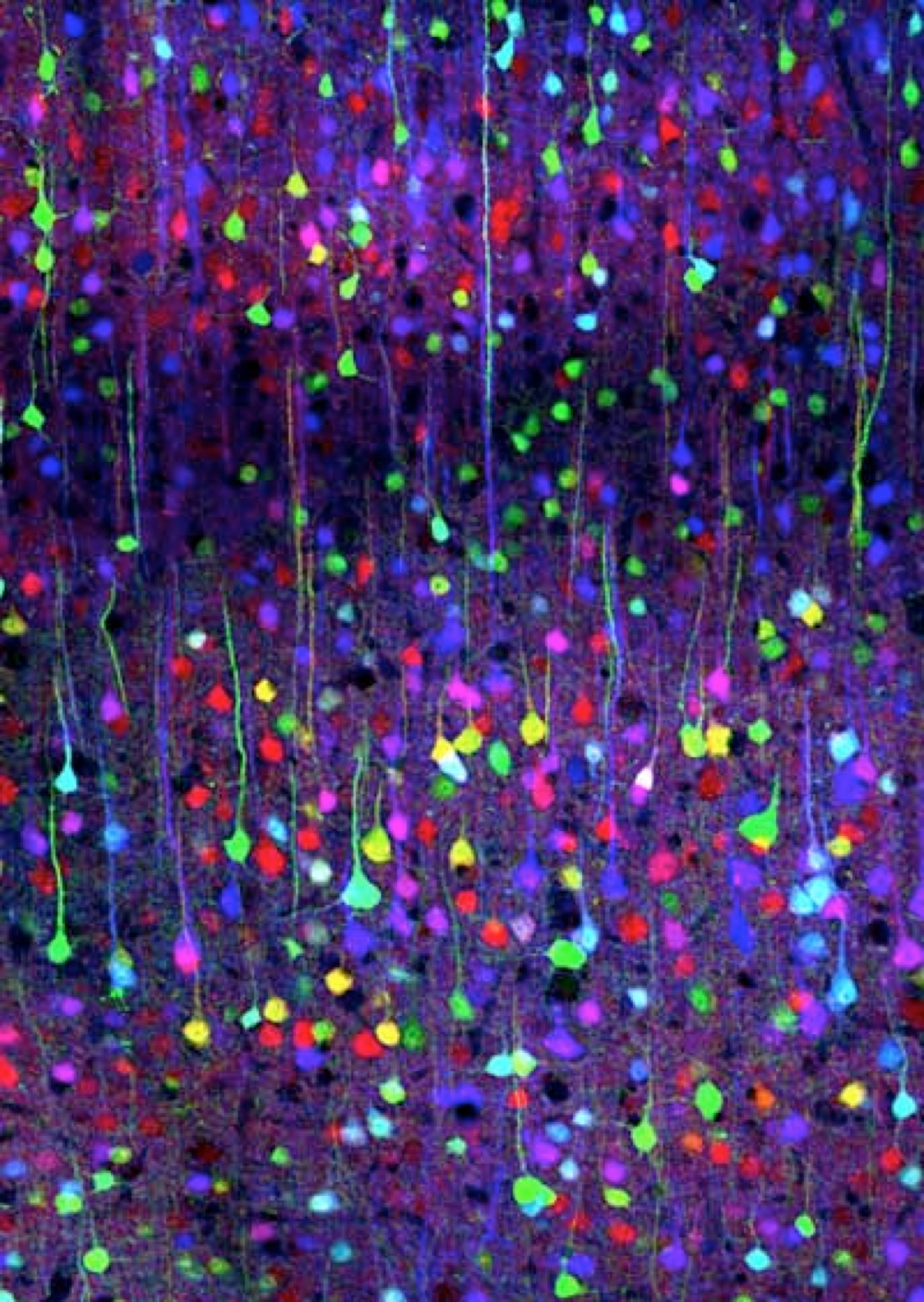
A whole spectrum of colours can be generated by randomly mixing red, green and blue fluorescent proteins. Here individual neurons in the mouse cerebral cortex have different colours. The technique is called Brainbow. (Confocal image by Tamily Weissman. Mouse by Jean Livet and Ryan Draft.)
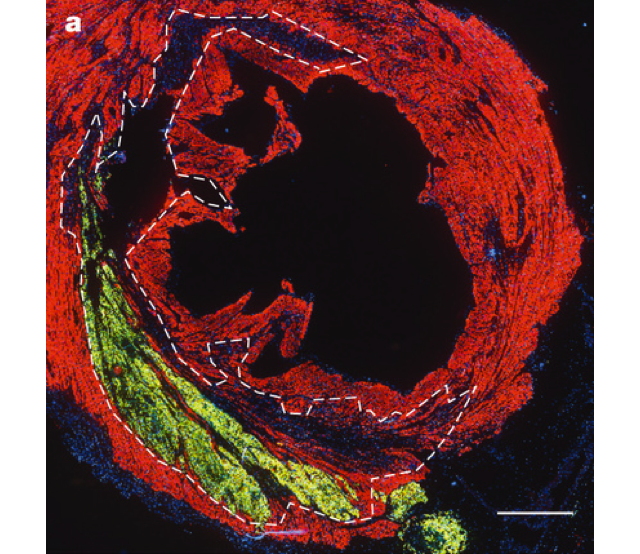
Confocal fluorescence microscope images of a macaque heart that has been subjected to a heart attack and injected with a billion human stem cells expressing green fluorescent protein. The human stem cells have differentiated and become green fluorescent heart muscle cells that have been incorporated into the monkey heart. The region enclosed within the dotted line was directly affected by the heart attack.
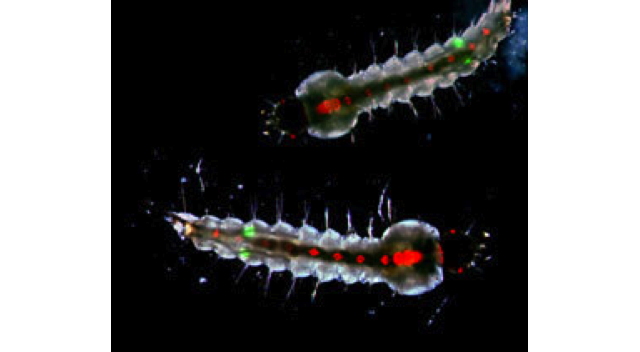
Two male mosquito larvae. Their gender is easily determined by noting the presence of a pair of green fluorescent testes. Female mosquitoes have sex only once in their lifetime. If the one and only time they mate with another mosquito happened to be with a sterile male, then that female would produce no offspring. This idea of controlling pest populations in which the female has sex a very limited number of times — an approach called the sterile insect technique — has been in use since the mid-1950s. Every year hundreds of millions of sterilized male screwworms and Mediterranean fruit flies are released. The males can have intercourse more than once and will spend their lives looking for available females. If enough sterile males are repeatedly released, they can collapse the local population of the pest. In order to use this technique to control malaria carrying mosquitoes one has to be able to tell the difference between male and female mosquito larva, hence the glowing gonads.
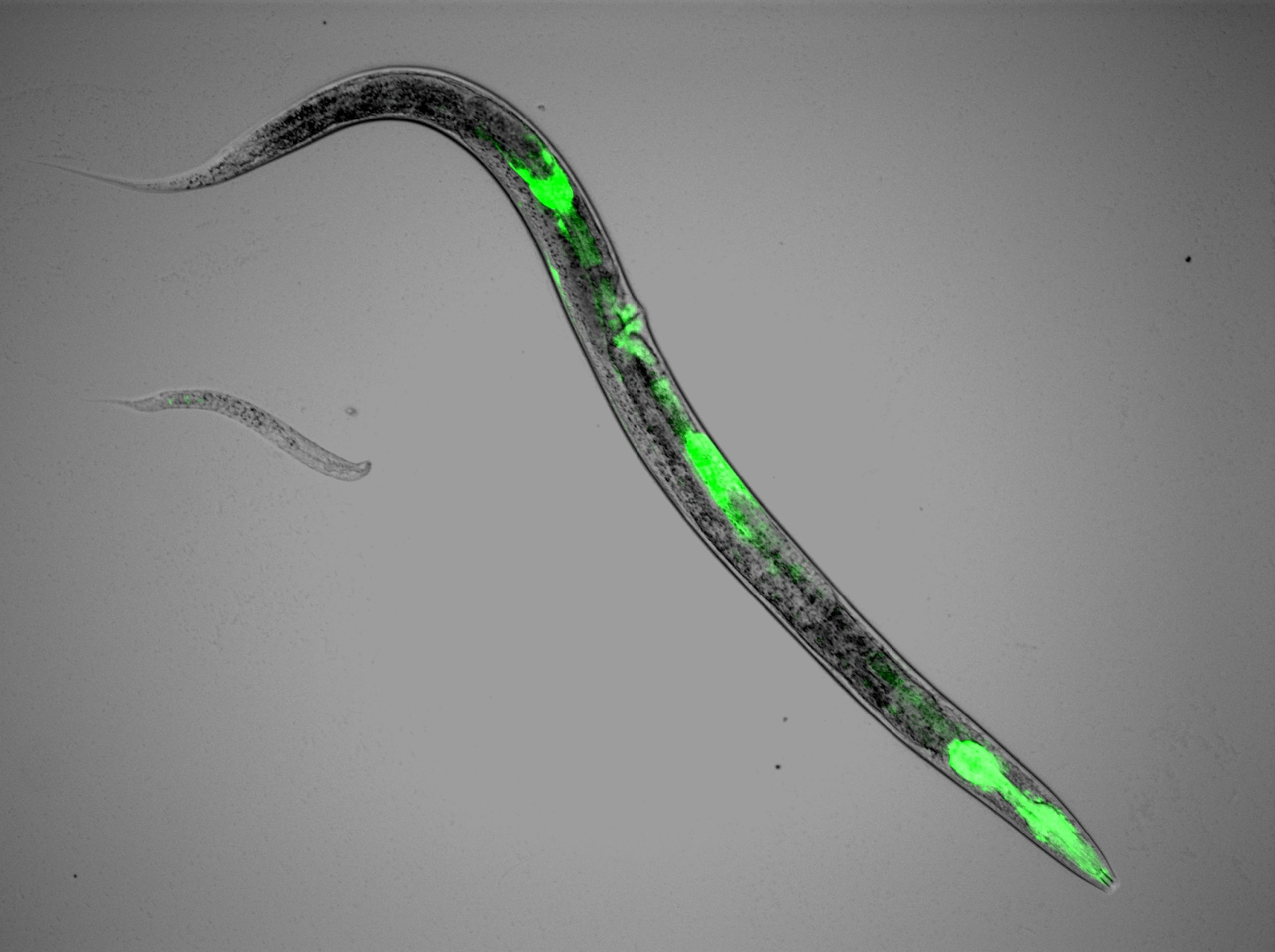
A genetically modified C. elegans worm with its rhythm proteins illuminated by GFP. The protein is expressed in the roundworm’s throat, intestine and reproductive organs. When the protein around the intestines is knocked-out the worm becomes constipated and only grows to a fraction of its normal size (see small worm on left). Worms without the rhythm protein in their throat don’t swallow regularly and drown in their own spit. When the timer gene in the reproductive area is switched off the sex life of the worm becomes chaotic. The worm loses its rhythm and the eggs reaching the sperm are too young or too old to be fertilised by the sperm and the worms have virtually no offspring. (Courtesy Ken Norman, University of Utah)
